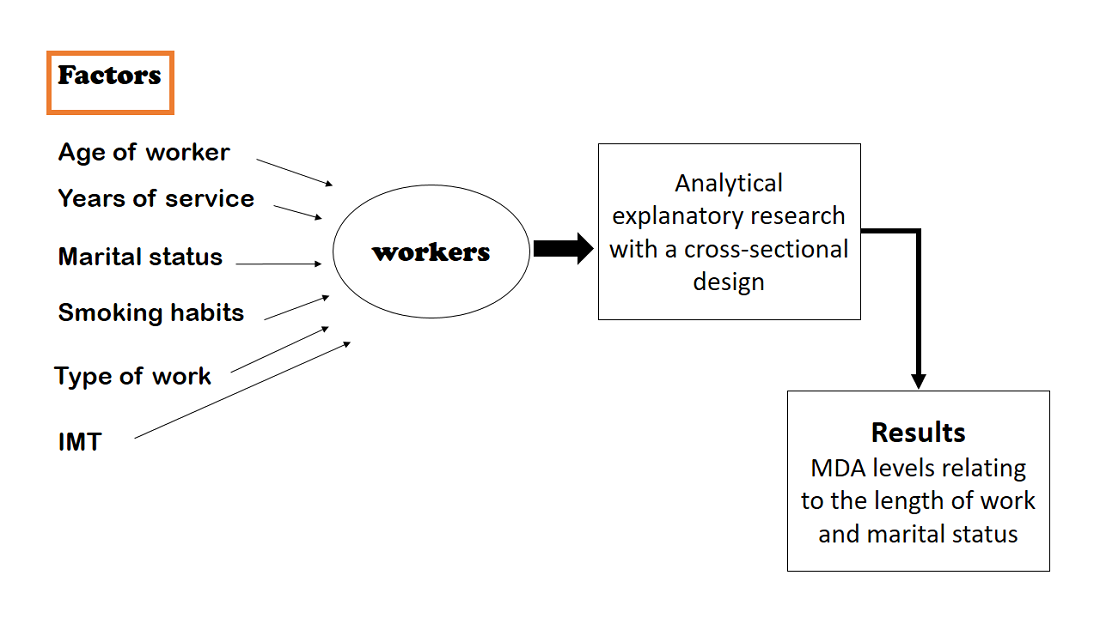MDA, as a sign of oxidative stress, was increasing as a factor that changes the toxicity of responses in the workplace and causes male infertility etiology. This study aims to measure the MDA levels of workers in the casting industry metal. This type of research was analytical explanatory research with a cross-sectional design. This study's variables include the variables taken are MDA levels while the independent variables were age, years of service, type of work, IMT, marital status, and smoking habits. A saturated sampling technique took the research sample of 34 workers. Data analysis used univariate and bivariate methods. The results determined that respondents had MDA hormone levels below the average of 24 or 70.6%, while respondents who had MDA levels above an average of 10 or 29.4%. MDA levels relating to the length of work and marital status, while the type of work, IMT, and smoking habits are not associated with MDA levels in metal casting industry workers in the CV. Bonjor Jaya Klaten.

